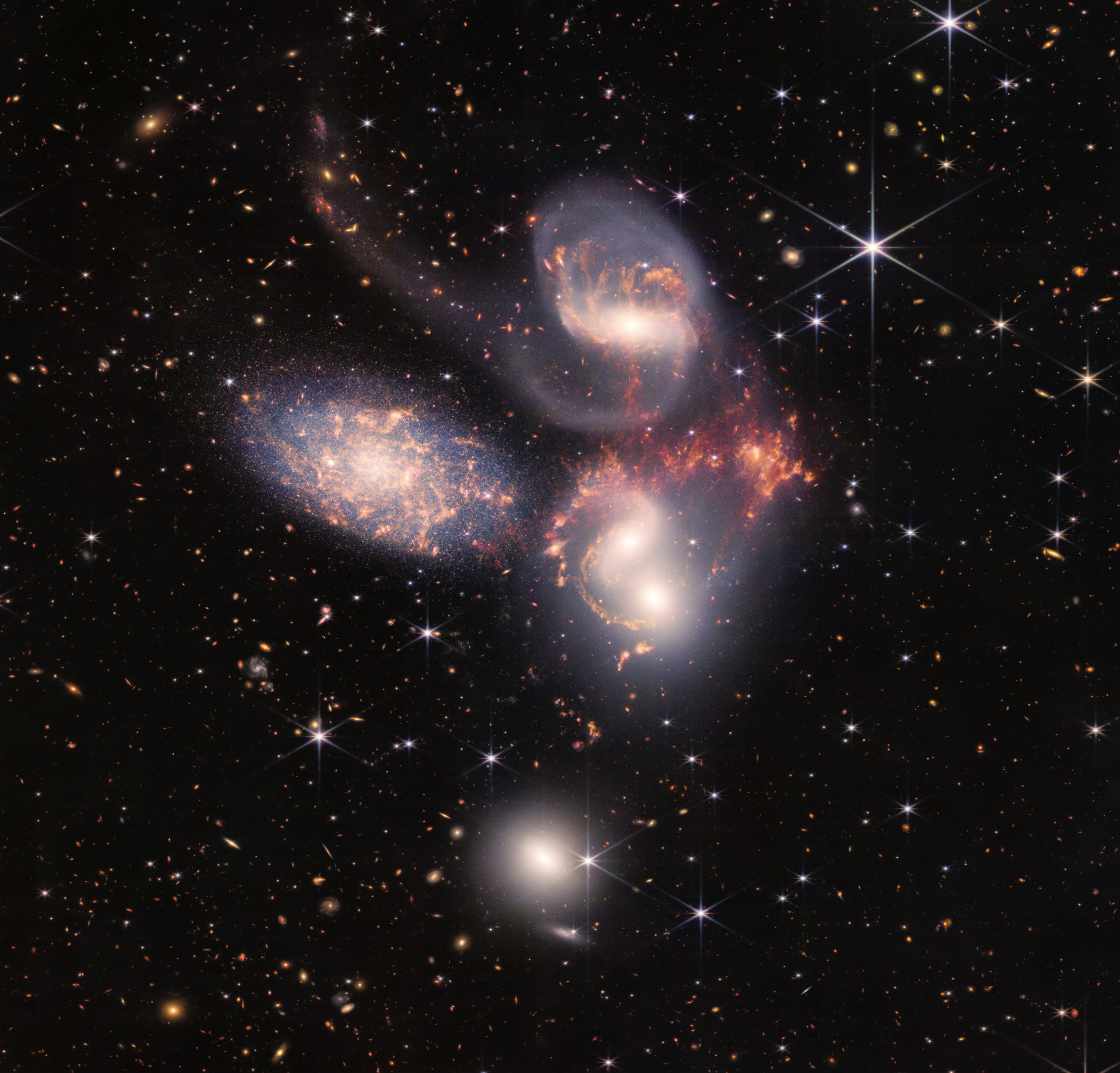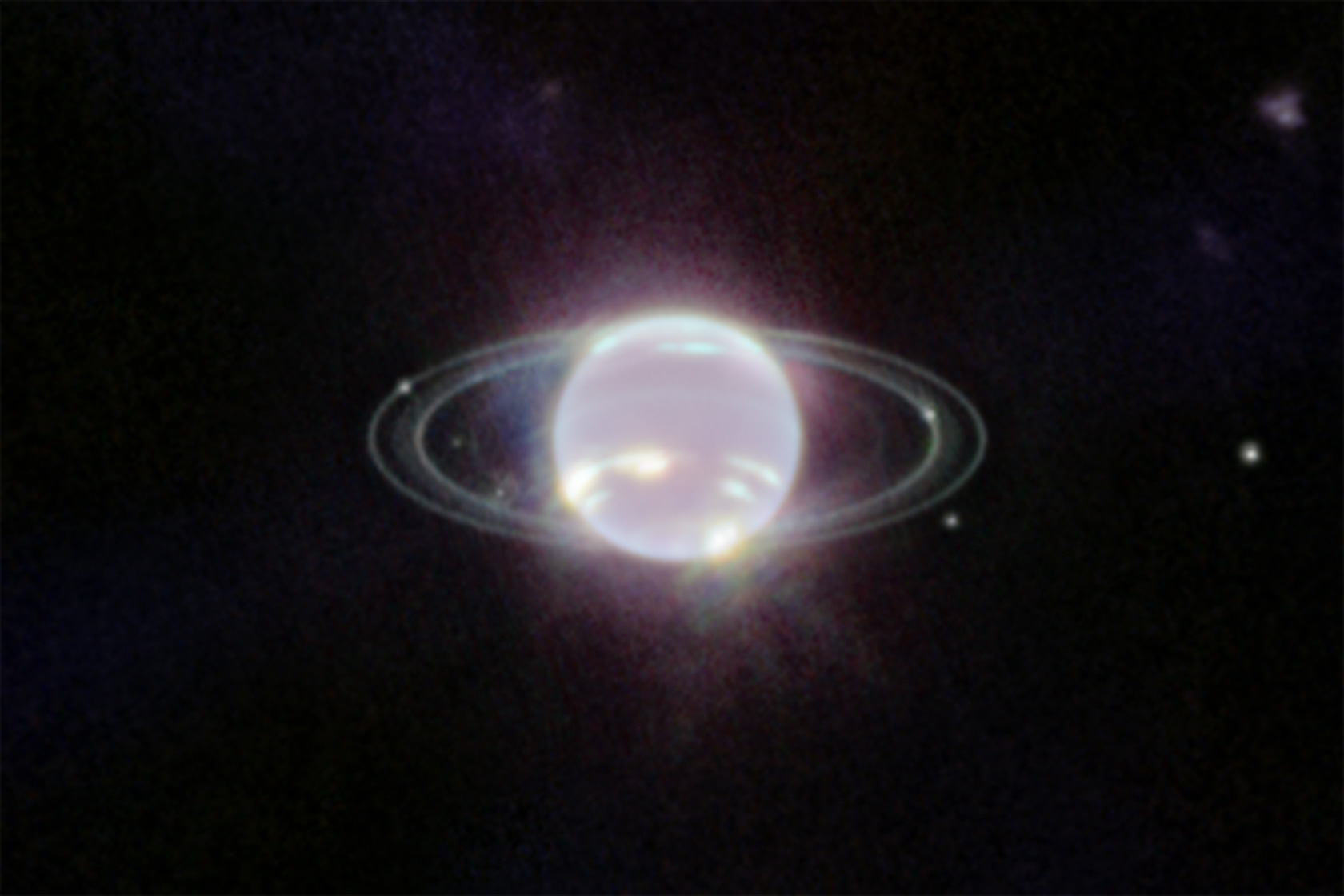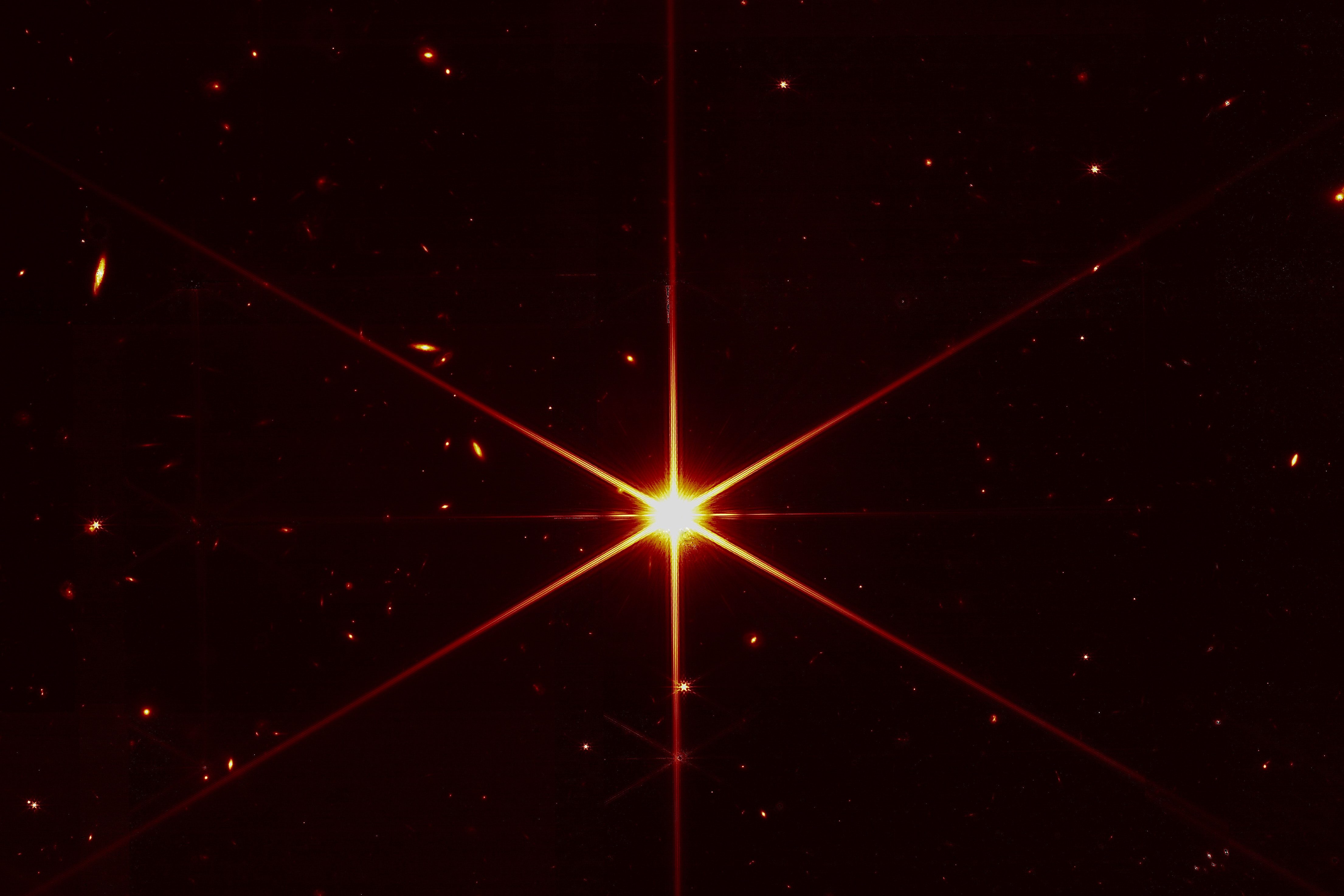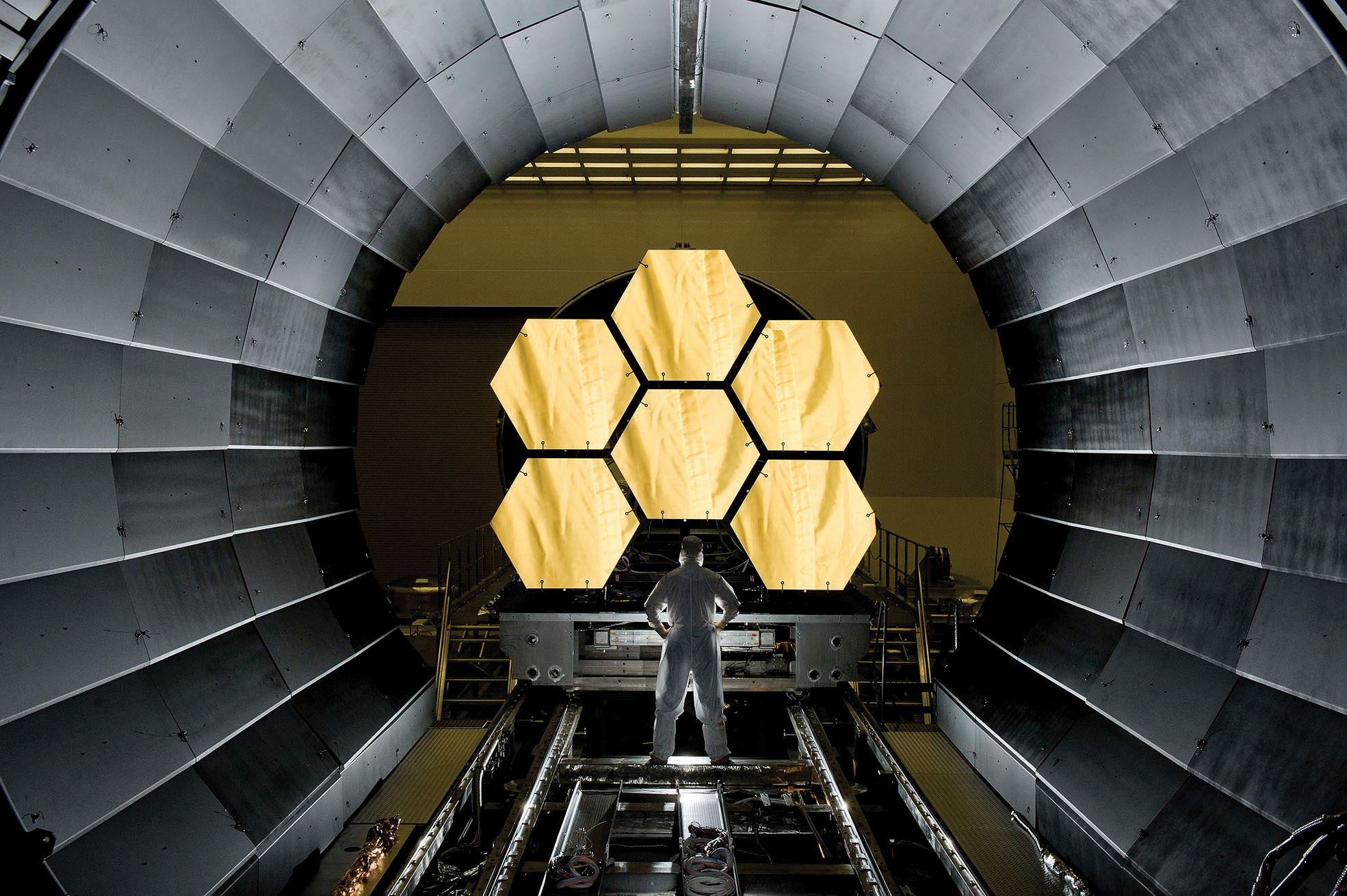The James Webb Space Telescope is one of MIT Technology Review’s 10 Breakthrough Technologies of 2023. Explore the rest of the list here.
Natalie Batalha was itching for data from the James Webb Space Telescope. It was a few months after the telescope had reached its final orbit, and her group at the University of California, Santa Cruz, had been granted time to observe a handful of exoplanets—planets that orbit around stars other than our sun.
Among the targets was WASP-39b, a scorching world that orbits a star some 700 light-years from Earth. The planet was discovered years ago. But in mid-July, when Batalha and her team got their hands on the first JWST observations of the distant world, they saw a clear signature of a gas that is common on Earth but had never been spotted before in the atmosphere of an exoplanet: carbon dioxide. On Earth, carbon dioxide is a key indicator of plant and animal life. WASP-39b, which takes just four Earth days to orbit its star, is too hot to be considered habitable. But the discovery could well herald more exciting detections—from more temperate worlds—in the future. And it came just a few days into the lifetime of JWST. “That was a very exciting moment,” says Batalha, whose group had gathered to glimpse the data for the first time. “The minute we looked, the carbon dioxide feature was just beautifully drawn out.”
This was no accident. JWST, a NASA-led collaboration between the US, Canada, and Europe, is the most powerful space telescope in history and can view objects 100 times fainter than what the Hubble Space Telescope can see. Almost immediately after it started full operations in July of 2022, incredible vistas from across the universe poured down, from images of remote galaxies at the dawn of time to amazing landscapes of nebulae, the dust-filled birthplaces of stars. “It’s just as powerful as we had hoped, if not more so,” says Gabriel Brammer, an astronomer at the University of Copenhagen in Denmark.
But the speed at which JWST has made discoveries is due to more than its intrinsic capabilities. Astronomers prepared for years for the observations it would make, developing algorithms that can rapidly turn its data into usable information. Much of the data is open access, allowing the astronomical community to comb through it almost as fast as it comes in. Its operators have also built on lessons learned from the telescope’s predecessor, Hubble, packing its observational schedule as much as possible.
For some, the sheer volume of extraordinary data has been a surprise. “It was more than we expected,” says Heidi Hammel, a NASA interdisciplinary scientist for JWST and vice president for science at the Association of Universities for Research in Astronomy in Washington, DC. “Once we went into operational mode, it was just nonstop. Every hour we were looking at a galaxy or an exoplanet or star formation. It was like a firehose.”
Now, months later, JWST continues to send down reams of data to astonished astronomers on Earth, and it is expected to transform our understanding of the distant universe, exoplanets, planet formation, galactic structure, and much more. Not all have enjoyed the flurry of activity, which at times has reflected an emphasis on speed over the scientific process, but there’s no doubt that JWST is enchanting audiences across the globe at a tremendous pace. The floodgates have opened—and they’re not shutting anytime soon.
Opening the pipe
JWST orbits the sun around a stable point 1.5 million kilometers from Earth. Its giant gold-coated primary mirror, which is as tall as a giraffe, is protected from the sun’s glare by a tennis-court-size sunshield, allowing unprecedented views of the universe in infrared light.
The telescope was a long time coming. First conceived in the 1980s, it was once planned for launch around 2007 at a cost of $1 billion. But its complexity caused extensive delays, devouring money until at one point it was dubbed “the telescope that ate astronomy.” When JWST finally launched, in December 2021, its estimated cost had ballooned to nearly $10 billion.
Even post-launch, there have been anxious moments. The telescope’s journey to its target location beyond the moon’s orbit took a month, and hundreds of moving parts were required to deploy its various components, including its enormous sunshield, which is needed to keep the infrared-sensitive instruments cool.
The aim is to keep the telescope as busy as possible: “The worst thing we could do is have an idle telescope.”
But by now, the delays, the budget overruns, and most of the tensions have been overcome. JWST is hard at work, its activities carefully choreographed by the Space Telescope Science Institute (STScI) in Baltimore. Every week, a team plans out the telescope’s upcoming observations, pulling from a long-term schedule of hundreds of approved programs to be run in its first year of science, from July 2022 to June 2023.
The aim is to keep the telescope as busy as possible. “The worst thing we could do is have an idle telescope,” says Dave Adler at STScI, the head of long-range planning for JWST. “It’s not a cheap thing.” In the 1990s, Hubble would occasionally find itself twiddling its thumbs in space if programs were altered or canceled; JWST’s schedule is deliberately oversubscribed to prevent such issues. Onboard thrusters and reaction wheels, which spin to change the orientation, move the telescope with precision between various targets across the sky. “The goal is always to minimize the amount of time we’re not doing science,” says Adler.
The result of this packed schedule is that every day, JWST can collect more than 50 gigabytes of data, compared with just one or two gigabytes for Hubble. The data, which contains images and spectroscopic signatures (essentially light broken apart into its elements), is fed through an algorithm run by STScI. Known as a “pipeline,” it turns the telescope’s raw images and numbers into useful information. Some of this is released immediately on public servers, where it is picked up by eager scientists or even by Twitter bots such as the JWST Photo Bot. Other data is handed to scientists on programs that have proprietary windows, enabling them to take time analyzing their own data before it is released to the masses.

Pipelines are essentially pieces of code, made with programming languages like Python. They have long been used in astronomy but advanced considerably in 2004 after astronomers used Hubble to spend 1 million seconds observing an empty patch of sky. The goal was to look for remote galaxies in the distant universe, but 800 exposures would be taken, so Hubble’s planners knew it would be too daunting a task to do by hand.
Instead, they developed a pipeline to turn the exposures into a usable image, a taxing technical challenge given that each image required its own calibration and alignment. “There was no way you could expect the community at that time to combine 800 exposures on their own,” says Anton Koekemoer, a research astronomer at STScI. “The goal was to enable science to be done much more quickly.” The incredible image resulting from those efforts revealed 10,000 galaxies stretching across the universe, in what came to be known as the Hubble Ultra Deep Field.
With JWST, a single master pipeline developed by STScI takes images and data from all its instruments and makes them science-ready. Many astronomers, both amateur and professional, then use their own pipelines developed in the months and years before launch to further investigate the data. That’s why when JWST’s data began streaming down to Earth, astronomers were able to almost immediately understand what they were seeing, turning what would normally be months of analysis time into just hours of processing time.
“We were sitting there ready,” says Brammer. “All of a sudden, the pipe was open. We were ready to go.”
Galaxies everywhere
Orbiting just a few hundred miles above Earth’s surface, the Hubble Space Telescope is close enough for astronauts to visit. And over the years, they did, undertaking a series of missions to repair and upgrade the telescope, starting with a trip to fix its infamously misshapen mirror—a problem discovered shortly after launch in 1990. JWST, which sits farther away than the moon, is on its own.
Lee Feinberg, JWST’s optical telescope element manager at NASA’s Goddard Space Flight Center, was among those waiting to see whether the telescope would actually deliver. “We spent 20 years simulating the alignment of the telescope,” he says—that is, making sure that it could accurately point at targets across the sky.
By March, the wait was over. JWST had reached its target location beyond the moon, and Feinberg and his colleagues were finally ready to start taking test images. As he walked into STScI one morning, one of those images, a test image of a star, was put up on screen. It contained an amazing surprise. “There were literally hundreds of galaxies,” says Feinberg. “We were just blown away.” So detailed was the image that it revealed galaxies stretching away into the distant universe, even though it hadn’t been taken for such a purpose. “Everybody was in disbelief how well it was working,” he says.
Following a further process of testing and calibrating instruments to get the telescope up and running, one of JWST’s earliest tasks was to look at WASP-39b with its cryogenically cooled Mid-Infrared Instrument (MIRI). This tool is the one aboard the telescope that observes most deeply in the infrared part of the spectrum, where many of the signatures of planetary atmospheres can be readily detected. MIRI’s spectrograph allowed scientists to pick apart the light from WASP-39b’s atmosphere. Rather than analyzing the observations manually, however, the team used a pipeline called Eureka!, developed by Taylor Bell, an astronomer at the Bay Area Environmental Research Institute at NASA’s Ames Research Center in California. “The objective was to go from the raw data that comes down to information about the atmospheric spectrum,” says Bell. Analyzing information from an exoplanet like this would usually require months of work. But within hours of the observations, the signature of carbon dioxide leaped out. A host of other details have since been released about the planet, including a detailed analysis of its composition and the presence of patchy clouds.
Others have used pipelines for much more distant targets. In July, studying early images from JWST, a team led by Rohan Naidu at MIT discovered GLASS-z13, a remote galaxy whose light could date from just 300 million years after the Big Bang—earlier than any galaxy known before. The discovery caused a global furor because it suggested that galaxies may have formed earlier than previously expected, perhaps by a few hundred million years—meaning our universe took shape faster than previously believed.
Naidu’s discovery was made possible by EAZY, a pipeline Brammer developed to somewhat crudely analyze the light of galaxies in JWST images. “It estimates the distance of the objects using these imaging observations,” says Brammer, who posted the tool on the software website GitHub for anybody to use.
Rush hour
Traditionally in science, researchers will submit a scientific paper to a journal, where it is then reviewed by peers in the field and finally approved for publication or rejected. This process can take months, even years, sometimes delaying publication—but always with accuracy and scientific rigor in mind.
There are ways to bypass this process, however. A popular method is to post early versions of scientific papers on the website arXiv prior to peer review. This means that research can be read or publicized before it is published in a journal. In some cases, the research is never submitted to a journal, instead remaining solely on arXiv and discussed openly by scientists on Twitter and other forums.
Posting on arXiv is popular when there is a new discovery that scientists are keen to publish quickly, sometimes before competing papers come out. In the case of JWST, about a fifth of its first-year programs are open access, meaning the data is immediately released publicly when it is transferred down to Earth. That puts the research team that proposed the program in immediate competition with others watching the data stream in. When the telescope’s firehose of data was switched on in July, many researchers turned to arXiv to publish early results—for better or worse.
“When you’re dealing with something this new and this unknown, things should be checked 10 or 100 times. That’s not how things went.”
Emiliano Merlin
“There was a rush to publish anything as soon as possible,” says Emiliano Merlin, an astronomer at the Astronomical Observatory of Rome who was involved in early JWST analysis efforts such as the race to find galaxies in the distant universe after the Big Bang. The discovery of GLASS-z13 and a dozen or so other intriguing candidates was published before follow-up observations could confirm the age of their light. “It was not something I personally really liked,” says Merlin. “When you’re dealing with something this new and this unknown, things should be checked 10 or 100 times. That’s not how things went.”
One concern was that early calibration issues with the telescope could have resulted in errors. But so far many of the early results have stood up to scrutiny. Follow-up observations have confirmed GLASS-z13 to be a record-breaking early galaxy, although its age has been slightly reduced, leading to a renaming of the galaxy to GLASS-z12. The possible discovery of other galaxies that formed even earlier than GLASS-z12 suggests that our understanding of how structure emerged in the universe may very likely need to be rethought, perhaps even hinting at more radical models for the early universe.



While many of JWST’s programs publicly release data immediately, sometimes resulting in a frantic rush to post results early, about 80% of them have a proprietary period, allowing the researchers running them exclusive access to their data for 12 months. This enables scientists, especially smaller groups that lack the resources of large institutions, to more carefully scrutinize their own data before releasing it to the public.
“Proprietary time evens out the lumps and bumps in resources,” says Mark McCaughrean, senior advisor for science and exploration at the European Space Agency and a JWST scientist. “If you take away proprietary periods, you stack it back in the direction of the big teams.”
Many scientists do not use their full 12-month allocation, however, which means they will only add to the constant stream of discoveries from JWST. Alongside the open-access observations being taken, there will be more and more proprietary results released to the public. “Now that the firehose is open, we will be seeing papers continuously for the next 10 years and beyond,” says Hammel. Perhaps well past that—Feinberg says the telescope may have more than 20 years of fuel, allowing operations to continue far into the 2040s.
“We’re cracking open an entirely new window on the universe,” says Hammel. “That’s just a really exciting moment to be a part of, for us as a species.”
A version of this story appeared in the January/February 2023 issue of the magazine.